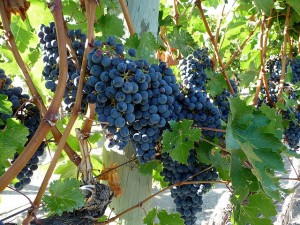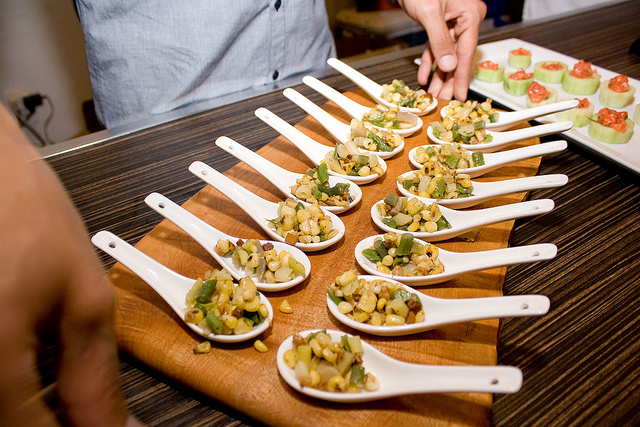The vibrant, mega-million-dollar farm to table movement is under increasing scrutiny these days. In San Diego, where produce is an $1.8 billion industry and year-round farmers markets can be found in almost every neighborhood (one of the few financial spinoffs of climate change, perhaps), the farm-to-table concept is getting a bad rep.
Farmers and ranchers say that the system doesn’t deliver. Or, more precisely, the restaurants that have for years cashed-in on the concept aren’t paying for what they get.
The story of San Diego’s farm-to-table dilemma first broke earlier this year, when San Diego Magazine columnist Troy Johnson interviewed a number of farmers and ranchers who said they were finding their brands listed on upscale menus where they hadn’t sold their products. Some had been turned down and then found their produce was being touted on the menu; others said they had never actually been contacted by the restaurant. One farmer had actually confronted the restaurant and later been compensated for what he said was fraudulent representation.
And yes, Johnson’s story got immediate attention. The well-known local food critic instantly found himself in the hot seat from restauranteurs who could show that they had a long-standing and successful farm-to-table relationship with local growers. In a subsequent article, he unearthed his research and gave names, dates and accounts of some of the complaints he had heard and investigated.
“Initially, I didn’t want to write the piece. It risked casting the entire restaurant industry in a negative light because of a few ethically challenged morons,” defended Johnson.
But his column got me thinking, nonetheless. What is it that makes a farm-to-table enterprise work? And why do some fail? And why San Diego County, of all places, which nurtures the perfect climate for hard-to-find fresh produce like artichokes and abundant, succulent tomatoes and citrus?
To get to the heart of the spiny question, I turned to another region that is world-renowned for its farm-to-table programs: the Province of British Columbia, Canada.
 British
Columbia doesn’t grow quite the same kinds of crops as Southern
California, but its economy is bolstered by just as many (probably
more) small farms and ranches that provide a bevy of local produce
to cities like Vancouver, Victoria, Kelowna and Penticton and
surrounding areas. It also has an additional caveat: a vibrant
tourism business that draws business from around the world, just
like San Diego.
British
Columbia doesn’t grow quite the same kinds of crops as Southern
California, but its economy is bolstered by just as many (probably
more) small farms and ranches that provide a bevy of local produce
to cities like Vancouver, Victoria, Kelowna and Penticton and
surrounding areas. It also has an additional caveat: a vibrant
tourism business that draws business from around the world, just
like San Diego.
B.C.’s farm-to-table movement got its start in the famed Kelowna area, a city at the heart of the Okanagan Valley, the province’s key wine-producing region. As in San Diego, farm-to-table programs make sense in the Thompson Okanagan. The region supports a $1.7 billion regional tourism industry and, in addition to several picturesque cities, is populated with more than 5,000 different farms. Many of those small farms are located within an agricultural land reserve that ensures B.C.’s vital produce and wine industries continue to flourish.
To get a sense of why B.C.’s farm-to-table program has continued to grow, I reached out to its Minister of Agriculture, Norm Letnick. Letnick was elected to the position in 2011 and is from Kelowna, so he is fairly familiar with the farm-to-table program’s history in this area.
The first distinction about B.C.’s farm-to-table program, said Letnick, is that it is regulated.
“It is part of the Buy Local program,” he said. The Buy Local program is a regional-specific incentive program that helps to promote B.C. businesses. It is “kind of a co-op advertising program between the government and the agri-food industry, where where we put in 50-cent dollars matching 50-cent dollars coming from the industry to help promote the purchase of local produce and agri-foods in the province,” explained Letnick, who noted that its broad structure leaves plenty of room for different businesses to partner and promote their skills and their products.
“So, someone in a restaurant might want to connect with, say, a farmer and promote cucumbers.” The restaurant and the farmer would pair up and apply for funding under the Buy Local program to promote the partnership. Carl’s regionally famous cucumber business would receive publicity just as would the Kelowna restaurant that wants to use the product.
The farm-to-table concept has been so successful that each year the Okanagan wine industry incorporates it into its wine festivals. Kelowna, Penticton and other Thompson-Okanagan cities sponsor a listing of restaurants that network with and promote local farms and wineries.
Although the province allocates funding for the Buy Local program ($2 million per year; $6 million since its start in 2012), applications are adjudicated through a not-for-profit organization, the Investment Agriculture Foundation of British Columbia (IAF), which reviews applications and funds eligible applicants. The same funding structure is used for a variety of other sub-categories that help to promote other industries, such as B.C.’s vitally important fishing industry.
 “A
big part of it is increasing the awareness of the purchaser as to
where their food comes from,” said Letnick. Perhaps a couple is
dining in an Okanagan restaurant and are about to order a couple of
steaks. “The Buy Local maybe paid some money for a tent card that
explains that particular steak they are eating actually came from
Joe’s Farm 20 miles outside of where the restaurant is,” said
Letnick, “and here’s Joe’s website and you can click on it to find
more information about Joe and Joe’s farm practices.”
“A
big part of it is increasing the awareness of the purchaser as to
where their food comes from,” said Letnick. Perhaps a couple is
dining in an Okanagan restaurant and are about to order a couple of
steaks. “The Buy Local maybe paid some money for a tent card that
explains that particular steak they are eating actually came from
Joe’s Farm 20 miles outside of where the restaurant is,” said
Letnick, “and here’s Joe’s website and you can click on it to find
more information about Joe and Joe’s farm practices.”
The program builds consumer awareness not only by promoting the product, but also by educating the patron on the local businesses and industries that make the area successful.
But there’s a catch, said Letnick. “The proponents have to file reports into the IAF.” They also are required to complete marketing tasks, like campaign advertising that ensures that there is clear accountability for the money and the intent used.
Letnick points out that since companies are incentivized to apply for funding, they are also subject to regulation and oversight. There’s also much less chance that bizarre requests, such as what Johnson highlighted in his recount of one farmer who was expected to provide, on short notice, select cuts of pork as a condition of purchase (without the offer to compensate for the rest of the slaughtered pig).
“[It] has its impact that is measurable, and at the end of the day collectively and cumulatively it helps to promote all of B.C.’s products to consumers,” said Letnick.
Truth be told, there are many other U.S. and Canadian regions that promote farm-to-table (also called farm-to-fork) programs. And as Johnson pointed out, not all of Southern California’s farm-to-table restaurants are guilty of mismanagement or marketing mistakes. But perhaps the takeaway from this million-dollar B.C. program is that successful marketing partnerships benefit from oversight and, just as importantly, incentives that require them to show accountability. As Letnick pointed out, the success of one small partnership benefits the industry as a whole. Conversely, the appearance of fraud or mismanagement can as well.
San Diego County does seem to be trying to promote new ventures in the agricultural sector. In 2013, the county proposed steps to reduce regulations and find ways to promote “more opportunities for agricultural ventures, such as microbreweries and cheese-making, to further support small-scale agricultural operations and promote agricultural tourism throughout the unincorporated portions of the county.” This summer it held a comment session for the new ordinance.
Perhaps opening the door for new business concepts is the first step. But creating ways to incentivize accountability by making sure that farm-to-table programs give credit to both the producer and the benefiting presenter is critical to ensuring a growing and sustainable leisure and hospitality industry.

Image of restaurant prep: Farm to table in Vancouver, BC: Shinsuke Ikegame; Grapes: Kelowna09; Kelowna harvest cuisine: Megan Cole; Farm to table dinner, Nevada City, Paul Racko
